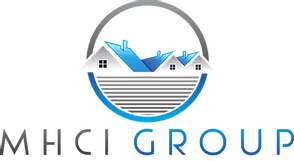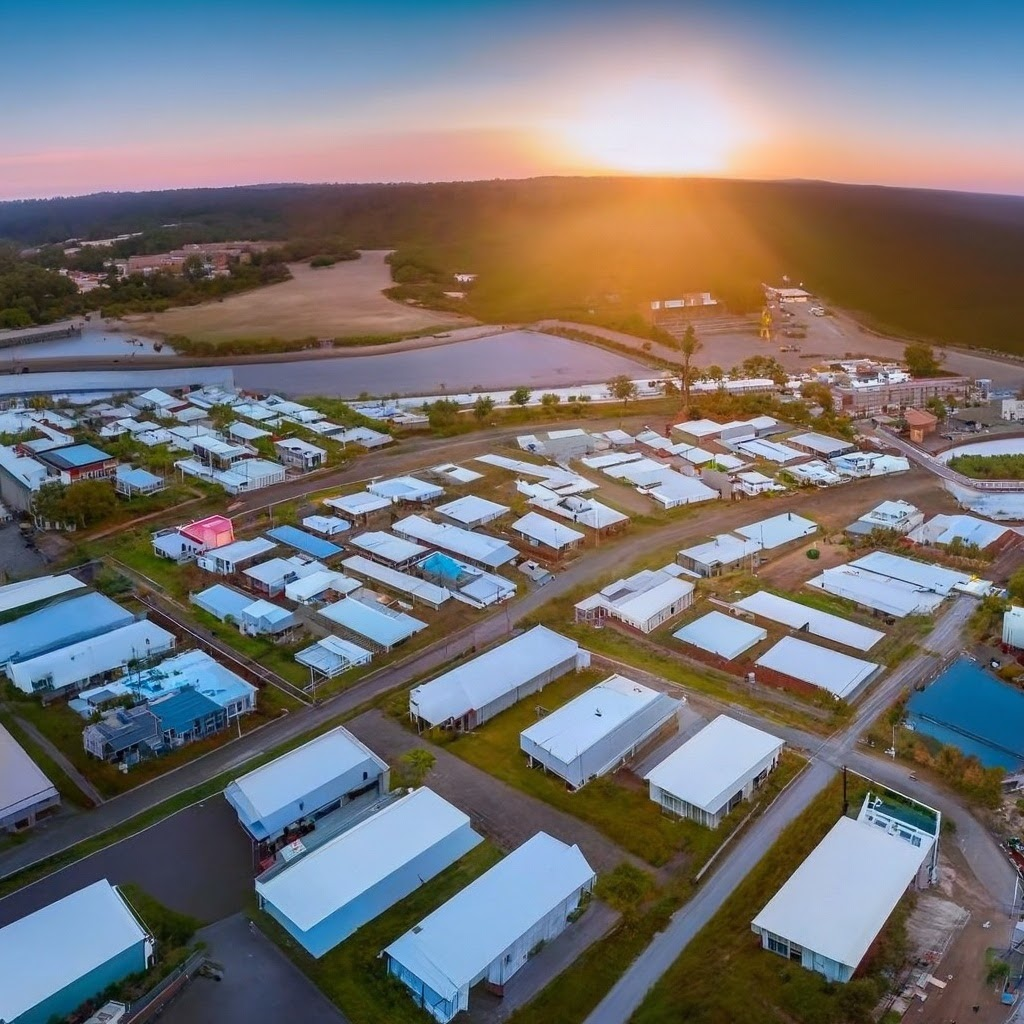Investing in Mobile Home Communities: Advantages, Challenges and Responsibilities
Daniel Schmergel • October 15, 2020
How to Determine if This Sector is Right for You

In this two-part series, LoopNet is providing an overview of the mobile, or manufactured, home community sector — one of the least understood and most intriguing real estate asset classes. Part one focused on the history and evolution of the asset class and considered the opportunities that exist for small private investors. Part two, presented below, centers around key investment criteria, relative strengths and challenges and approaches to responsible ownership.
When we left off at the end of part one of this series, Frank Rolfe, a private investor who is one of the largest owners of mobile home communities in the United States and the co-founder of Mobile Home University, was about to detail his key investment criteria for mobile home communities. So, without further ado:
Investment Criteria for Mobile Home Communities
Rolfe noted that the first mobile home community he purchased, in 1996, taught him what to avoid in communities going forward. Based on that experience, he delineated the five most critical items that he believes investors, particularly those new to the sector, need to consider:
Infrastructure: Rolfe says that good infrastructure is paramount. He cautions against private septic or wastewater systems and wells, in particular, and he encourages investors to seek out communities with municipal water and municipal sewer access. Similarly, he is generally opposed to master-metered gas or electric systems, which essentially require a mobile home community owner to become a private utility. Managing mobile home communities’ energy use is particularly challenging given that modern manufactured homes utilize considerably more power than the older homes did, which can put a strain on existing systems and lead to costly repairs and upgrades
Density: According to Rolfe, the ideal density for a mobile home community is about seven units per acre. That enables the operator to put the largest possible double-wide or single-wide home on every lot. Some older communities have densities between 10 and 15 homes per acre, which is not ideal, but workable. However, some communities exceed 20 homes per acre. At that density, it won’t be possible to replace outdated, vacant units with modern homes, as they will be too large. In addition, you could run afoul of the local fire marshal. Technically, they require a 10-foot separation between homes for safety, and they possess the authority to shut down the community if the density doesn’t allow for that distance.
Location: As with any real estate investment, location is a pivotal consideration when evaluating a mobile home community. Rolfe prefers to focus on communities that are either in upscale suburban locations — mostly populated with detached homes, in well-regarded school districts and featuring vibrant retail amenities — or in urban settings that are experiencing a renaissance and undergoing gentrification. He suggests that investors should avoid rural locations, or suburban locations that aren't in good school districts.
Age of the homes: Rolfe believes it is important for investors to consider the age of the existing homes in the community. Homes that were built prior to 1976, i.e. pre-HUD, are less than 14-feet wide, which makes them rather claustrophobic; they also lack modern amenities, such as washers and dryers. Accordingly, if a lot renter vacates one of these homes, it will need to be replaced, rather than repaired and renovated. If the park has a preponderance of pre-1976 units, this could create significant expenses for an investor in the future. On the other hand, Rolfe was quick to point out that you don’t want all of the homes in the community to be brand new, either. Brand new homes are, most likely, still being paid for, which means there’s a greater risk of the occupant defaulting on their mortgage, which would leave the community owner with an empty lot, or even mortgage payments, depending on how the loan was underwritten. Rolfe believes that the ideal scenario is a community populated by relatively modern homes that are already paid for.
Economics: Rolfe suggests that the cap rate on the community should be roughly three points higher than the interest rate on the investor’s loan, assuming 70%-80% leverage. According to Rolfe, this spread will usually enable an investor to garner a cash-on-cash return of approximately 20%. On more desirable properties, Rolfe noted that you may need to factor potential upside from rent increases into your model in order to reach the recommended cap rate threshold.
While Rolfe’s criteria may serve as a framework for investors, it’s worth noting that other sources adhere to somewhat differing investment principles. For instance, Mike Conlon, CEO of Affordable Communities Group, said that, like Rolfe, he initially avoided mobile home communities that lacked access to public utilities, but he eventually revised that position, “because everything’s fixable.”
Conlon went on to say that location is his primary concern when evaluating a mobile home community. “I’m always going to buy a park that’s within 20 minutes of a major metro. And the reason I do that is my belief [that] all multifamily, whether apartments or mobile home parks, is about jobs.”
Nonetheless, he acknowledged that there are opportunities for investors in mobile home communities located in smaller, more tertiary markets. In those instances, Conlon suggested that it’s important for the investor to have firsthand knowledge of the local market and be comfortable with the area’s long-term employment prospects. Entering into a situation where a single employer — a local factory, for instance — is responsible for the majority of the jobs in the area could be precarious.
In general, Conlon’s view of the overall market was a bit more cautious than Rolfe’s. “It’s a tough market right now and there’s obviously a lot of advantages … with mobile home parks, but the prices are way higher than they used to be. It feels a lot to me like ’07, where even mobile home parks in Florida got way too [expensive] and people made mistakes.”
Nonetheless, everyone in the industry that LoopNet spoke with, Conlon included, remained largely, if guardedly, optimistic about the future prospects of the sector. If anything, as Conlon observed, the industry seems poised for growth. “New homes that we’ve brought in are all sold out for three months. We don’t even have them on the ground yet, and we have deposits; people who are downsizing [from conventional houses] are coming to us to buy these new homes,” he said.
Michael Nissley, executive managing director and national director of the Manufactured Housing & RV Group at Colliers International, put it even more succinctly: “I’m very bullish on the mobile home park industry.”
Harker Heights, TX (Frank Rolfe)
The Advantages of Investing in a Mobile Home Community
In articulating the relative advantages of investing in mobile home communities compared to other real estate assets, Rolfe referenced Warren Buffet’s moat analogy, in which a moat represents the circumstances that protect your investment.
“We’re the moat kings. We’re like a castle where there’s a moat, and there’s another moat behind that moat and then another moat,” Rolfe said.
More specifically, based on LoopNet’s reporting, we identified five primary advantages to investing in mobile home communities: limited maintenance and personnel costs; decreased turnover; the unlikely benefits of a bad reputation; significant upside potential; and a contrarian attitude.
Limited Maintenance Expenses and Responsibilities
Conlon began his foray into the real estate industry by investing in multifamily apartment complexes. Within a few years, he had acquired approximately 500 units, but he struggled to grow his business beyond that threshold, largely because of the maintenance-intensive nature of traditional multifamily assets. In 2005, he purchased his first mobile home community, and a year later he sold the apartment complexes and plunged headlong into investing in mobile home communities, which he says are simply “a lot easier to manage.”
To illustrate the minimized maintenance burden, Conlon told LoopNet that, of the 43 communities that he owns, only four of them feature a full-time maintenance employee. “In apartments, anything over 60 [units] required a full-time, certified [air conditioning technician], and those guys were tough to maintain and hold, so that was a big issue for us. We didn’t want to be beholden to those people, so the mobile home park makes it much easier from that perspective,” Conlon said.
Rolfe concurred with Conlon’s perspective. “It is just land rental … You don’t have to get involved in the homes, you don’t have to fix toilets and things. The stuff that people hate about [maintaining] apartments, we don’t have to [deal with], because we just rent land.”
Less Turnover
One of the most significant costs that owners of traditional multifamily complexes contend with is turnover. “By nature, apartments are more transitory, and they have anywhere between 40% and 50% turnover on an annual basis,” Conlon said. Conversely, Conlon told LoopNet that the annual turnover in his mobile home communities is approximately 15%.
“Mobile home parks tend to be [populated by] more long-term residents. The resident typically owns their home, so … they’re sort of invested in the property and they tend to stay longer. And you can develop a community that way,” Conlon said.
Norm Sangalang, a Senior Vice President with the CBRE National Manufactured Housing & RV Resorts (MHRV) Specialty Practice, concurred with Conlon. “At a stabilized occupancy level, the continuity of [mobile home community] occupancy is highly consistent and very durable.”
The relatively low level of turnover directly impacts an investor’s returns. As Conlon remarked, “Turnover costs you money, because you have to change the unit, fix up things, whatever; the lower the turnover, the better.”
When a Bad Reputation Is a Good Thing
Investors in mobile home communities need to possess a certain boldness; a willingness to venture where other investors might fear to tread, and that’s part of what makes the sector potentially rewarding.
As Rolfe put it, “The U.S. media has such an entrenched stereotype they have built about how terrible trailer parks are that most people won’t even look at investing in them.”
This bad reputation has also significantly constrained new development in the sector, which decreases the potential for unexpected competition. In fact, Nissley noted that many municipalities have even attempted to reduce the number of existing communities. He estimated that Miami-Dade County was home to as many as 500 mobile home communities at one point; today, he approximated that less than 75 of those communities remain. While Nissley acknowledged that some of those communities were destroyed by hurricanes, he believes that many were the victims of municipal agendas.
That phenomenon is not limited to Miami-Dade County either. According to Rolfe, “Supposedly, there’s about 10 [mobile home communities] built per year, and there’s about 100 torn down [in the United States], so we’re actually an endangered species.”
Significant Upside Potential
Lot rents at mobile home communities have trailed inflation by a considerable margin over the last 50-60 years. “The average lot rent in America is believed to be about $280 per month, and the average lot rent in 1960 was $500 a month in today’s dollars,” Rolfe said. That creates potential upside for investors.
There’s also the potential for long-term development opportunities in some regions. Nissley commented that some investors approach mobile home communities as a land investment, with the added benefit of an existing income stream. “Some people view mobile home parks as a land bank, and there’s a few investors in this business that just look at it that way. And their analysis [involves] a bit more than just the going-in cash flow and how can they improve the cash flow. They’re looking at the broader market; they’re looking at land prices; they’re looking at likely zoning for that particular area, and land use and density.”
Market Resilience
While LoopNet is hesitant to label any asset class as recession-proof, mobile home communities might almost warrant such a designation (emphasis on “almost”).
“During good times and bad … manufactured housing seems to be weathering the storm very, very well,” Nissley remarked.
In fact, according to Rolfe, the industry verges on contrarian, and can often perform better during intervals when the broader economy is experiencing economic distress. “Our sales pick up when people are doing poorly and they need more affordable housing,” Rolfe said.
Nissley went on to say that the sector’s stability is a feature it shares with multifamily and single-family homes — it fulfills a fundamental need. “Being primary housing, where someone lives, from a default perspective, you’re probably going to get rid of your boat, your car, possibly your office, before you get rid of your house.”
Nissley continued, “From that perspective, affordable housing is probably among the safer places to be in this market.” Nissley further observed that the CMBS data from recent market corrections supports this thesis, with mobile home communities and multifamily complexes outperforming other asset types.
The Disadvantages of Investing in a Mobile Home Community
The preceding benefits notwithstanding, mobile home communities, like any investment, come with their share of risks and challenges. Based on LoopNet’s reporting, the most notable potential issues that investors should be prepared for are the cost of replacing homes, skeptical (at best) municipalities, sketchy record-keeping practices and a degree of culture shock.
The Burdens of Home Replacement
According to Nissley, the most significant change in the mobile home industry over the last 20 years, from a community owner’s perspective, is the manner in which new homes are brought into the community. In the event that there is an existing empty lot, or a vacancy develops, the capital expense of purchasing new mobile homes or refurbishing existing units has often shifted from the lot renter to the owner of the community. “The number one thing that requires additional capital to this industry and that changed the business model was the need for an owner/operator of parks to fill [lots] or rehab the homes in the parks themselves, with their own balance sheet.”
While initiatives such as 21 Mortgage’s CASH program (discussed in part one of this series) endeavor to minimize this burden, they still require the owner/operator of the community to advertise the home and show it to potential purchasers. Further, in the event that the homeowner defaults on their mortgage, the owner of the community becomes responsible for the mortgage payments and upkeep of the home until they can secure a new purchaser.
Sangalang noted that the lack of robust financing options for mobile homes fosters this paradigm. “The purchase of individual manufactured homes has a much smaller pool of lenders, which is a proportionally much smaller percentage of the overall housing market. The scale of traditional housing loans provides a broader and more competitive lending market that leads to higher efficiency,” he said.
While Conlon sees a value-add opportunity — i.e., the ability to increase cash flow through improvements — in bringing new homes into a community (as outlined in part one), Nissley notes that investors need to proceed carefully. “The liability of maintenance and repair of a park-owned home can sometimes exceed your revenue, if you’re not careful.”
Uncooperative Municipalities
Mobile home communities are often subject to challenges from their local municipalities. Accordingly, Nissley says that it’s critical for prospective investors to grasp the zoning regulations and general attitude towards mobile home communities in the municipality where they are investing. In particular, Nissley says that investors will need to understand the difference between mobile home communities that are conforming and those that are nonconforming.
Conforming means that the property is legally zoned and currently operating as a mobile home community. However, over time, particularly in urban areas, some mobile home communities have had their land use or zoning changed by the municipality. This is because, possibly due to urban sprawl, the municipality no longer believes a mobile home community is appropriate for that area. Even if a park is technically zoned appropriately, or at least was at one time, it is considered legally nonconforming if the zoning or land use changes. While the existing homes are grandfathered for their current use, a community owner could be restricted from making any changes to the community, such as adding amenities or moving in new homes.
Rolfe suggests that the real issue that local governments have with mobile home communities isn’t necessarily the product type, but the lack of tax revenue that mobile home communities generate compared to other uses, such as office, retail or single-family housing. Regardless of the reasoning, Rolfe says that investors must ensure that their certificate of zoning and all required permits are in order to avoid any municipal complications.
Increased Research and Due Diligence
While the lack of consolidation in the mobile home community sector can create opportunities for investors, it also presents challenges. Finding communities to purchase can require some digging. And, even once a potential community is identified, investors shouldn’t expect that all of the records will be straightforward, or even available.
Because many smaller, or so-called “mom and pop,” owners don’t have any debt on the properties, they aren’t required to produce reports or keep computerized records. Even rent rolls could be hard to come by. “It’s not uncommon to ask the seller, ‘can I see your financials’… and it’s basically a spiral notebook with numbers written in purple crayon,” said Rolfe.
“Sometimes I’ll take over a park, I’m buying one right now on the west side of Charlotte, where there aren’t any records, there’s no leases, everything was sort of done in cash … that’s the type of thing you’re going to run into occasionally,” Conlon said.
Such obstacles are by no means insurmountable, but they do require particularly astute due diligence on the part of the investor.
Culture Shock
It’s a delicate issue, but it would be disingenuous not to acknowledge that mobile home communities are different than most other real estate asset classes that a typical investor may consider.
As Rolfe pithily noted, “The average American never goes into a mobile home park.”
Nissley observed that mobile home community ownership, more often than not, “comes with hardship.”
Rolfe went on to say, “It is a strange industry, and it takes a while to get used to it. There’s some degree of culture shock for anyone entering the industry, myself included. Unlike most other real estate sectors where you feel like you kind of, sort of, understand it, unless you’ve lived in a mobile home park, you don’t.”
Conlon cautioned that, “You need to understand that it’s a group of people that’s pretty much been kicked to the curb their whole life, and they can be sensitive about certain issues, especially rent raises.”
Or, to frame it from another perspective: mobile home community ownership comes with a unique set of responsibilities that a prospective investor should be aware of.
La Costa Mobile Home & RV Park, Lovejoy, GA (Mike Conlon)
The Tenets of Responsible Mobile Home Community Ownership
The responsibilities of a mobile home community owner will vary depending on the particular community. Some communities are completely NNN, with pass-throughs for every expense, up to and including real estate taxes; while other communities are full-service, with the owner/operator involved in every facet of the community, including ownership of the homes themselves.
In most instances, though — assuming the community owner has no responsibility for the actual mobile homes, and they are just collecting lot rent — Rolfe indicated that the following items typically represent the core areas of responsibility for a mobile home community owner:
Providing an uninterrupted flow of utilities, including water, sewer, electric, cable television, internet, etc.
Maintenance of roads
Providing sufficient ambient lighting throughout the community
A well-maintained entry and signage
Enforcement of community rules and zero tolerance for the breaking of laws
Annual permit renewal (in some states)
Snow removal throughout common areas, including entrance/exit (if applicable)
General common area maintenance
It’s worth noting that Rolfe is a somewhat controversial figure within the industry, with a penchant for sometimes speaking indelicately about the sector and its customer base. However, in LoopNet’s interactions with him, Rolfe, as well as Conlon, emphasized the unique responsibility mobile home community owners assume.
“If we are anything, we are a solution, not a problem, because we are the only folks providing actual affordable housing in the U.S. … we are the only nonsubsidized affordable housing that exists,” Rolfe said.
Conlon said that he has developed a playbook for when he acquires distressed communities that is focused on creating a sense of camaraderie at the properties. This typically comprises removing any tenants whose behavior is detrimental to the community; repairing or replacing aged homes; and installing new amenities, including soccer fields, playgrounds, etc.
Rolfe echoed these notions, “We put in a lot of picnic tables, a lot of grills, a lot of playgrounds. We took old, abandoned facilities in parks … brought them back to life, made them into community centers. We had a park in Iowa where we put in a library with computers.”
Conlon reduced his basic philosophy to a single sentence, “Keep reinvesting in your community; that’s the number one thing you have to do.”
Rolfe felt similarly, saying, “As long as you go in with a positive attitude that, ‘as long as I’m in the business, my goal will be to profit from making things the best they can be,’ that’s a winning strategy, because then everyone’s happy with the end product. The residents, the city, the future buyer, the banker, the appraiser — that’s the only way you can get universal happiness.”


